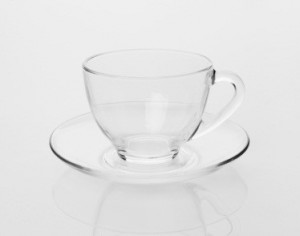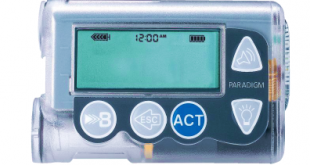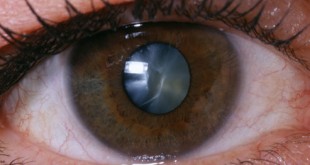Many people with diabetes think that a diabetic diet requires sugar to be eliminated from the diet. This is not true! Sugar is allowed to be consumed but diabetics must be aware of the amount.
Pertaining to the issue, we will teach you how you can still enjoy your meals even though you have diabetes. The method is called carbohydrate counting.
What do you need to know about carbohydrate?
- Carbohydrate are your body’s main source of energy.
- If you consume too much carbohydrate-rich foods at one time, your blood sugar levels may increase. This can become a problem for diabetics.
- Bear in mind that every time carbohydrate is mentioned in this article it is referring to both complex carbohydrate and simple carbohydrate.
- Complex carbohydrate will be broken down during digestion.
| Examples of complex carbohydrate | Examples of simple carbohydrate |
|
|
What is carbohydrate counting all about?
“How much water should an adult drink in a day? The answer is between 6 – 8 glasses of plain water”. The same concept is used here.
A diabetic patient will always ask his or her dietitian how much carbohydrate he or she can eat and the dietitian will answer 10 units for an example. In short, it is a method to quantify and determine how much carbohydrate a diabetic is allowed to consume in a day according to his or her requirements.
Why is carbohydrate counting important?
Counting and monitoring your carbohydrate intake is the key to control your blood sugar level besides taking the prescribed medication and performing your exercise.
What are sources of carbohydrate?
- Rice, pasta, grains
- Cereals, biscuits, bread
- Starchy vegetables like pumpkin and potatoes
- Beans, lentils and legumes such as kidney beans and baked beans
- Fruits and fruit juices
- Sweetened foods/ beverages like cakes, cookies, kuih-muih and teh tarik
- Milk and milk products.
How much carbohydrate do you need?
It is always best to talk to your dietitian on how much carbohydrate exactly that you need for your body in order to maintain good control of blood sugar. Your dietitian can also help you with the menu planning.
In general, a female will need 3 to 4 units of carbohydrate and a male will need 4 to 5 units of carbohydrate at main meals (breakfast, lunch and dinner) and 1 to 2 units of carbohydrate for snacks. This requirement depends on your physical activity level and medication that you take, if any.
How much is 1 unit of carbohydrate?
1 unit of carbohydrate = 15 grams of carbohydrate
Below is the list for 1 unit of carbohydrate.
Cereals, Grains & Bread
| · ½ cup rice
· 1 cup thick porridge · ½ cup kuew teow/ mee hoon/ loh see fun · 1 slice bread · ¾ cup ready to eat cereal · 3 pieces crackers · 1/3 cup cooked pasta |
· 1/3 piece tosai
· ½ piece chappati · ¼ cup uncooked oats · ½ cup sweet potato/ tapioca/ yam · 1 small potato · ½ cup baked beans · 1 small corn on the cob (6 cm length) |
Fruits
| · 1 medium apple/ orange/ pear/ kiwi
· 1 small banana (‘pisang emas’) · 2 small mangosteen/ plum · 8 pieces grapes/ ‘langsat’/ longan · ½ small mango · ½ cup canned fruit |
· 5 whole lychee/ rambutan
· 1 slice papaya/ watermelon/ pineapple · 3 pieces prunes · 2 pieces dates · 2 medium seeds durian · ½ cup fruit juices |
Milk and Milk Products
| · 1 cup fresh cow’s milk
· 1 cup UHT fresh milk · 1 cup soy milk |
· 4 rounded tbsp powdered milk
· ¾ cup yoghurt · 2 slices cheese · 2 tablespoons (tbsp) grated cheese |
Sweets and Drinks / Foods Containing Sugar
| · 1 tablespoon syrup/ jam/ jelly/ table sugar/ honey
· 2 tablespoons light syrup/ cordial |
· ½ cup ice cream /frozen yoghurt
· 2 small cookies (? ounce) |
Find this confusing? Here’s an example.
Let’s say you have consumed the following for lunch.
Sample 1
- 1½ cups of rice,
- 1 medium chicken (soup),
- 4 tbsp of stir fried spinach,
- 1 medium apple, and
- 1 glass of plain water.
Step 1 : Identify the source of carbohydrate. They are rice and apple.
Step 2 : Let’s do the carbohydrate counting.
½ cup of rice = 1 unit of carbohydrate.
Therefore 1½ cups of rice = 3 units of carbohydrate.
1 medium apple = 1 unit of carbs.
So in total, you have eaten 4 units of carbohydrate.
Sample 2
- 1 piece of plain bun,
- ½ cup mashed potato,
- 1 standard piece grilled chicken fillet,
- steamed vegetables, and
- 1 cup of orange juice (no added sugar).
Step 1 : Identify carbohydrate foods; bun, mashed potato and orange juice
Step 2 : Carbohydrate counting ;
1 plain bun = 1 unit,
½ cup mashed potato = 1 unit, and
1 cup of orange juice = 1 unit.
Total units = 3 units of carbohydrate.
It’s quite simple right? You may find it a bit confusing at the beginning but as you practice this and make carbohydrate counting a habit, you will find the counting as easy as ABC.
Reminders to all diabetics
You can still enjoy some of those sweetened foods and beverages, that’s good news right? However getting most of your carbohydrate from whole grains, fruits, vegetables, low-fat milk, and yogurt is important as these foods will provide you with more vitamins and minerals.
Do look for a dietitian to further discuss your diabetic meal plan. Log on to www.dietitians.org.my to find your nearest dietitian.
Rerefences
- Clinical Practice Guidelines on Management of Type 2 Diabetes Mellitus, Malaysia 4th edition 2009.
- Malaysians’ Dietitians Association (2013). Medical Nutrition Therapy Guidelines for Type 2 Diabetes.
- American Diabetes Association. diabetes.org
 PENDIDIKAN PESAKIT Kementerian Kesihatan Malaysia
PENDIDIKAN PESAKIT Kementerian Kesihatan Malaysia




